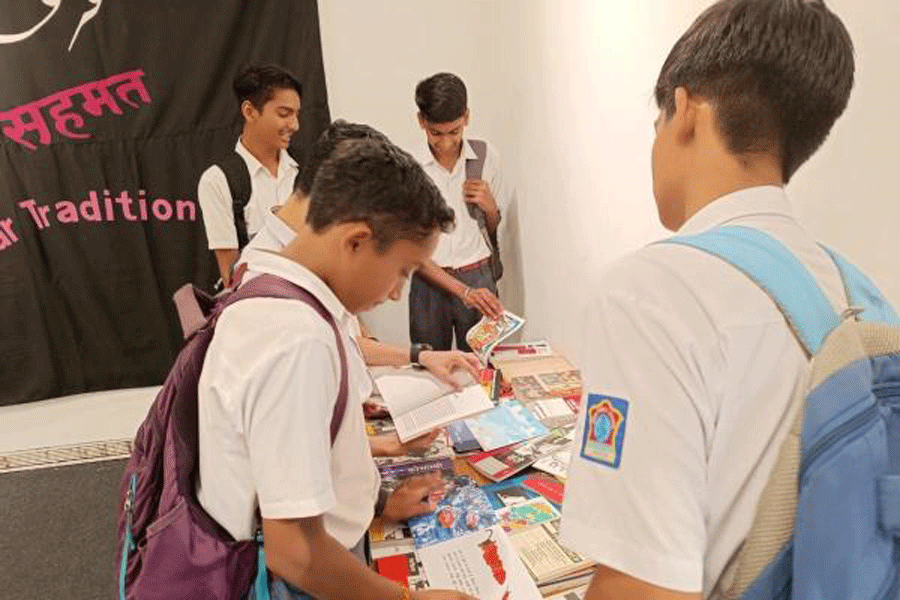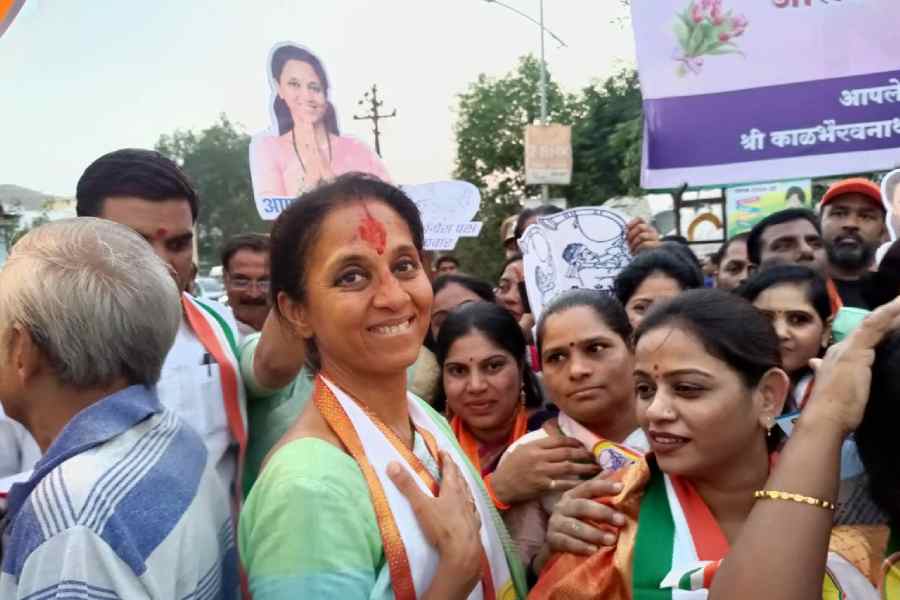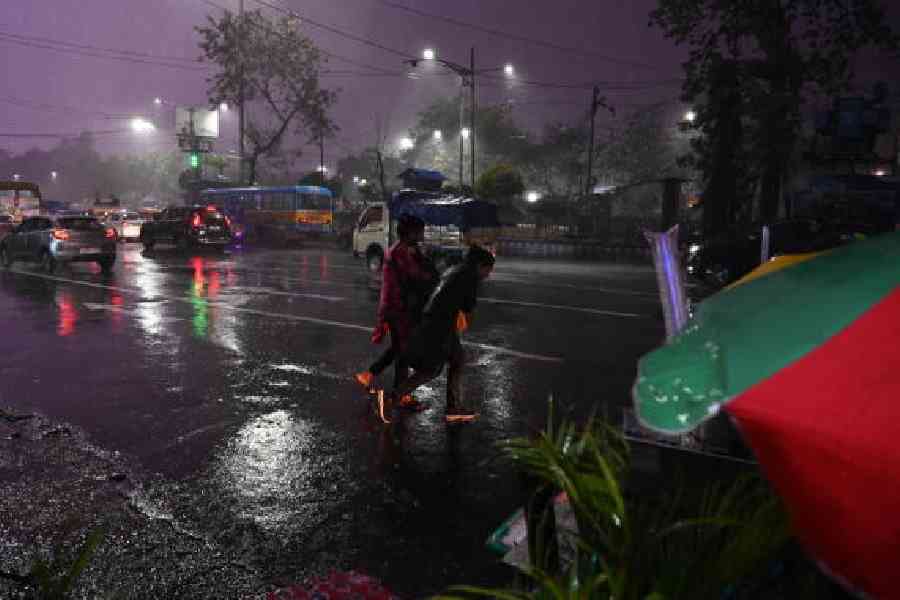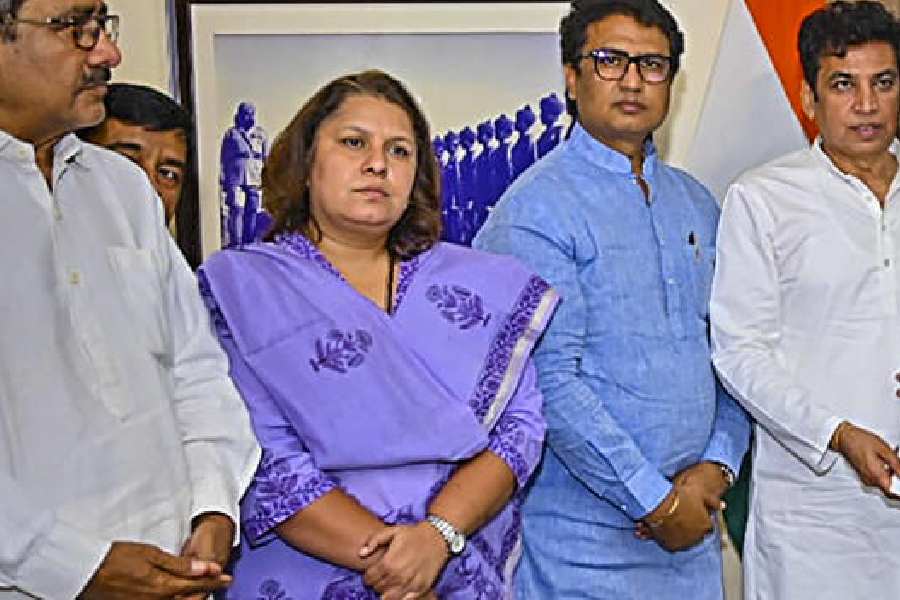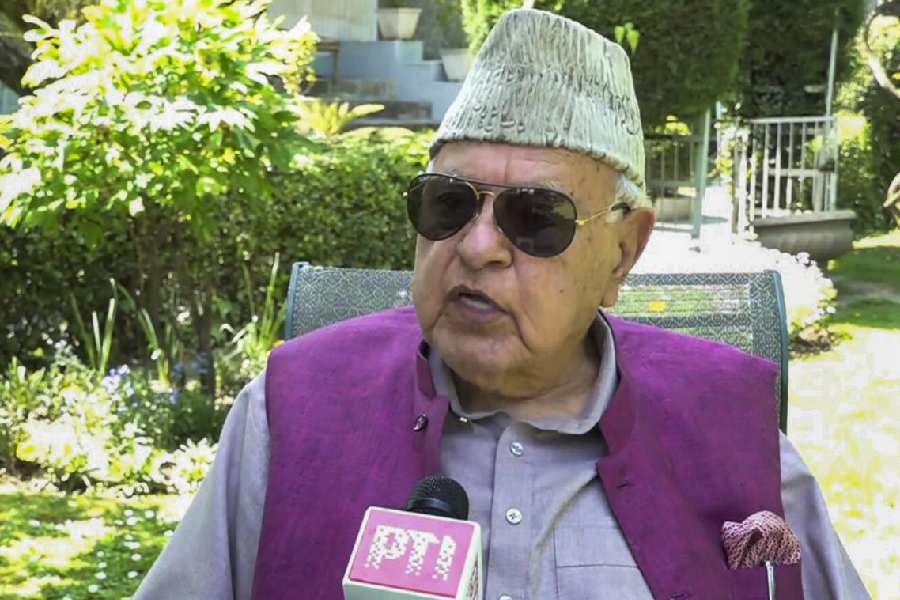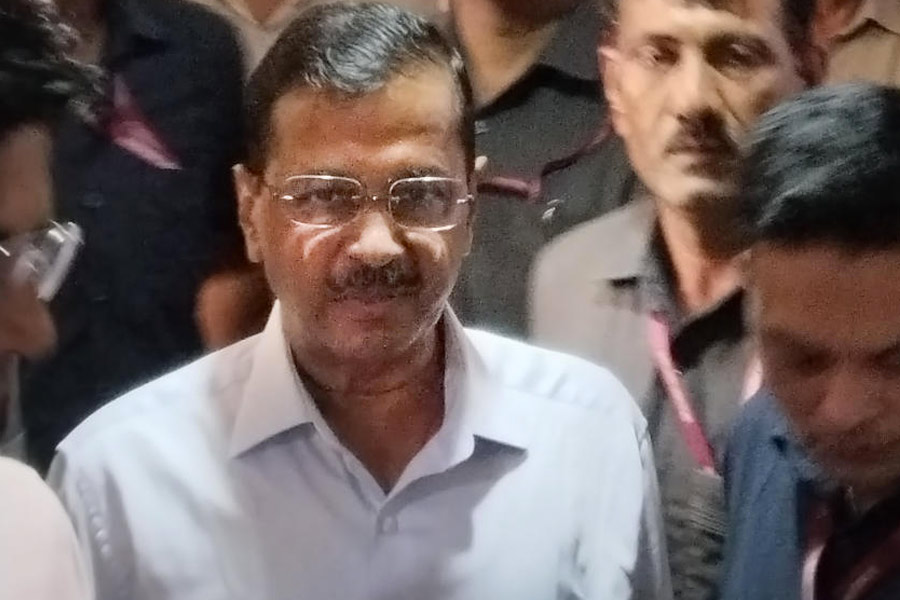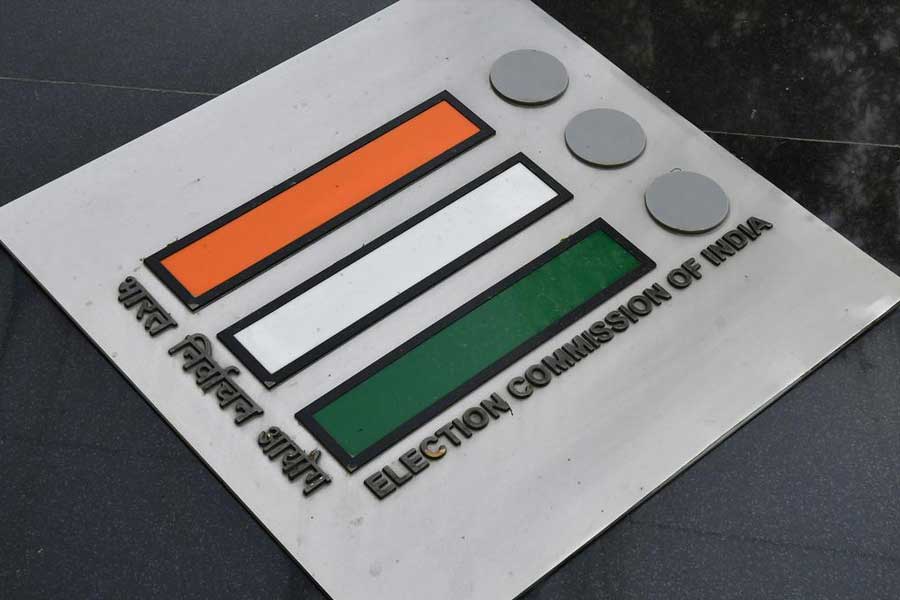In a Hindi poem laced with sarcasm and titled Deshbhakti (patriotism), Arushi Vats from Delhi writes about the exclusivity of progress, how the central government has smothered the idea of progress by imposing on it its divisive, bigoted and regressive ideology, and how it can make one feel that one is being suffocated and voices are being stifled.
Kuldeep Kumar takes a more direct approach in his poem Lal Qila Aur Tiranga (Red Fort and the Tricolour). He writes how one particular colour among the three on
the Indian national flag is trying to elbow out the other two.
Izhar Alam, who did his Master of Fine Arts from Jamia Millia Islamia, has painted a loud, multi-beaked avian creature wearing a colourful uniform, symbolising the equivocating rabble-rousers and their henchmen who foment sectarian violence.
Babitha Rajiv’s powerful painting of a trussed and gagged woman leaves no doubt about the message she is trying to convey.
These are among the many striking images and texts displayed, with the intention of expressing support for communal harmony and artistic freedom, at the Hum Sab Sahmat exhibition, on till August 15 at the Jawahar Kala Kendra in Jaipur.
The Kendra was designed by Charles Correa. Sahmat is an artists’ collective, funded by friends of artists and the organisation.
“Its open plan is welcoming, and people walk in — to see the exhibitions, performances and events, also to discuss and have coffee,” said Aruna Roy, social activist and founder of the Mazdoor Kisan Shakti Sangathan, who has contributed one of her paintings to this exhibition.
The exhibition was first held in Delhi a year ago to commemorate the 75th year of Indian independence. Roy enabled the exhibition to travel to Rajasthan.
The welcoming ambience at the venue is in keeping with the original concept of the Sahmat exhibition. It was meant to create an alternative, independent platform to allow multifarious voices, which were being strangulated by the authoritarian regime at the Centre, to be heard.
It was also meant to create an awareness of the rights and freedoms won through the Independence struggle, which were being trampled upon in violation of the Constitution.
Nicola Durvasula has brilliantly used the idea of fingerprint identification to underline the problem.
The exhibition is non-hierarchical in form. Paintings by famous names mingle
with the works of unknown artists on the jute display boards, as do photographs, a piece of embroidery by Mohd Arif, poems and other texts in various Indian languages.
Thus Sudhir Patwardhan, Parthiv Shah, Githa Hariharan, Geetanjali Shree, Pablo Bartholomew, Nilima and Gulammohammed Sheikh, Anita Dube, Vivan Sundaram, Subodh Gupta, Veena Bhargava, Mona Rai, Amitava Das, Jyoti Bhatt and photographers like Chandan Gomes, Vinit Gupta and Vicky Roy are all there alongside the works of ordinary citizens who had been asked to respond to the 75th anniversary of India’s independence.
Irrespective of fame or the lack of it, they have all been allotted the standard 15”x15” canvases to create their work. The 280 exhibits are displayed on portable jute panels.
As Aruna Roy commented: “Paintings by well-known artists are on display, rubbing frames with unknown amateurs and ordinary Indians, all committed to the constitutional value of the equality of all religions, genders, castes and classes.”
Photographer Ram Rahman, an organiser as well as participant, had said in an earlier interview that in 1991, Sahmat had organised an exhibition titled Images and Words and later one christened Ham Sab Ayodhya.
He had added that the current exhibition was in keeping with the idea of countering the “strange nationalism” prevalent today.
Aban Raza, who curated the politically charged exhibition, said in an interview: “Through the course of many years, Sahmat has faced many threats but it also fought back to protect its right to freedom of expression and did so successfully.
“Unfortunately, one does feel the need to be more careful today than before….”
Raza said the exhibition Sahmat had organised after the Babri Masjid demolition in 1992 “too travelled to places and it was designed in a way that it could be mounted on the streets”.
She added: “I guess that is the difference between now and then --- you could take out a brave exhibition and display it on the streets then, and today you cannot.”
So, last year the exhibition was held at Jawahar Bhavan in Delhi from July 2 to August 15 close to the old Parliament building. Concerts by T.M. Krishna and Shubha Mudgal and the screening of Saeed Mirza’s films, in particular, had then drawn droves of young people and students.
Since then, the event has travelled to Patiala, Bhopal, Santiniketan, Ajmer, Uttarakhand and now Jaipur. The next stop is Ahmedabad.
Aruna Roy said in Jaipur: “The response has been very good, enthusiastic and curious. The exhibition has been viewed by a cross-section of society from all age groups, classes, (from) urban and rural Rajasthan, and (by) students from
various educational institutions.”

